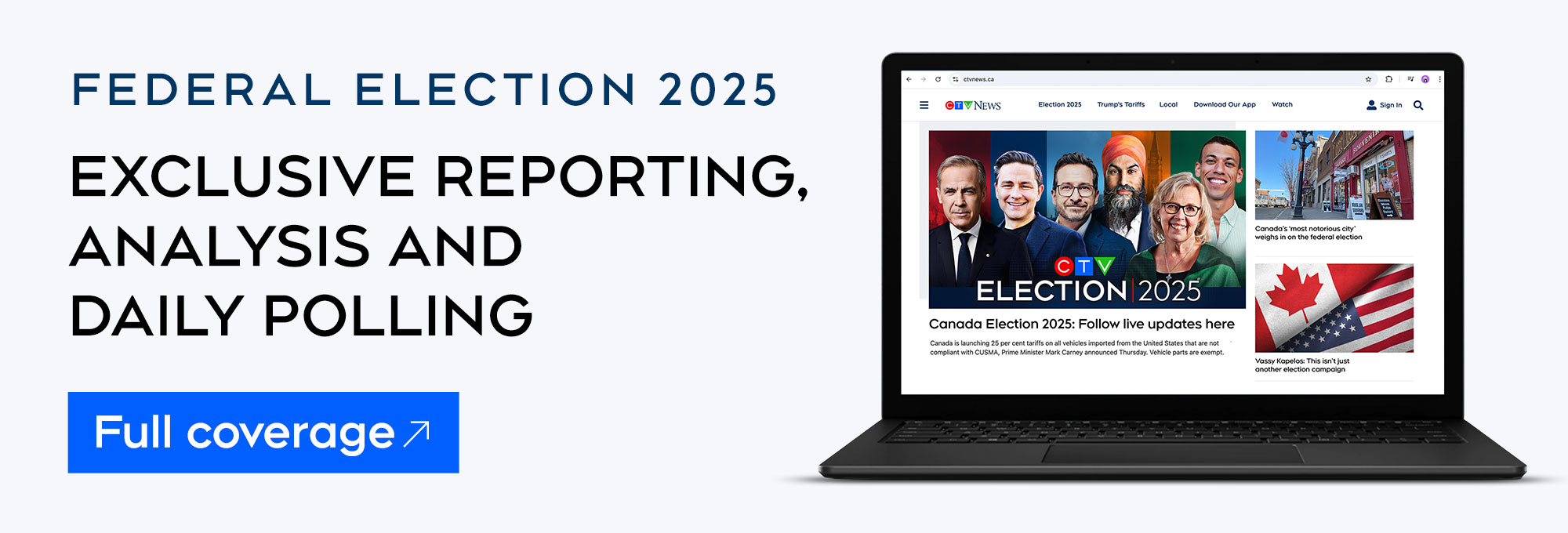Since the last federal election in Sept. 2021, Canada has welcomed roughly two million new citizens. They come from more than 200 countries and territories, with more than half being born in India, Philippines, Nigeria, China, Pakistan, Syria, Iran, the U.S. and France.
According to Elections Canada, the independent agency responsible for administering federal elections, new Canadian citizens tend to vote less often than the general population, usually due to issues related to the electoral process. To help, CTVNews.ca has created a guide so newcomers can better understand how Canada’s elections work in advance of voting day on April 28.
Who is eligible to vote in Canada?
To vote in Canada, you must be a Canadian citizen and at least 18 years old on election day. Permanent residents, refugees and temporary work visa holders are not eligible to vote. Voters must also prove their identity and current address, usually with a government-issued ID like a driver’s license. You can only vote once in each election.
How does voting in Canada work?
Unlike in the United States where citizens vote directly for the president, Canadians do not actually vote for their prime minister. Canada is divided into 343 electoral districts, also known as ridings. Each riding is represented by a member of Parliament (MP). You only get to vote for the MP in the riding where you live. The political party that wins the most ridings across Canada generally gets to form government, with that party’s leader becoming prime minister. The prime minister is also typically an MP – for example, former prime minister Justin Trudeau currently represents a riding in Montreal. Federal elections are typically held every four years.
What are Canada’s main political parties?
Canada’s largest national political parties are the governing Liberals, the opposition Conservatives and the New Democratic Party, or NDP. Other significant parties are the Bloc Quebecois in Quebec, which is dedicated to the French-speaking province’s sovereignty, and the environmentally focused Green Party of Canada. Several smaller parties and independent candidates also run in each election. The Liberals and Conservatives are the only parties that have ever formed government in modern Canadian history.

Your vote, your choice
Who you vote for is entirely your choice. To further their own geopolitical interests, foreign governments that could try to spread disinformation and interfere in Canada’s elections include China, India, Russia, Pakistan and Iran, according to Canadian intelligence officials.
Be wary of AI-generated online content and political social media posts that originate from these countries or target these communities, as they may be trying to influence your decision. Foreign interference activities and threats to national security can be reported to Canadian officials online or by phone. Your vote is always private and confidential.
Registering to vote
To vote, it’s best to register online or in-person at your local Elections Canada office by April 22. You’ll need to prove your identity and address with a driver’s license or any other federal or provincial ID that has your photo, name and current address. If that’s not available, you can show two pieces of official information with your name and current address, like a bank statement, utility bill, provincial health card or student ID. You can find a full list of accepted forms of ID here. If you have moved and need to update your address, you can use Elections Canada’s Online Voter Registration System.
It’s also possible to register at a polling station on election day if you bring the proper ID. If you don’t have any form of ID on you, you can still register by filling out and signing a declaration, so long as you are with someone who can vouch for you. They must have proper ID and be assigned to the same voting location as you.
Where and when to vote
You can vote at your assigned polling station on election day, which is Monday, April 28. Your assigned polling station is usually in your neighbourhood and will be listed on your voter information card, which will be mailed out after you register. You can also find your voting location online. Polls will be open for 12 hours on election day, usually from 9 a.m to 9 p.m., although exact times can vary by area. By law, your employer must give you up to three hours off work to cast your vote on election day, either at the start, end or during your shift.Voting early
You can also vote early between and April 22. Advance polling stations are open for four days between April 18 to 21 from 9 a.m. to 9 p.m. Locations are listed on your voter information card and can also be searched online. Or you can vote early at your nearest Elections Canada office from now until April 22 at 6 p.m.
Many university and college campuses also host advance voting between April 13 and 16 and it is possible to vote between April 20 and 22 if you are currently hospitalized. If you are unable to vote in person, you can apply to vote by mail before April 22 at 6 p.m. Canadians who are outside the country can also vote by mail if they apply to be on the International Register of Electors before April 22 at 6 p.m. Mail-in ballots must be received by 6 p.m. on April 28 to be counted.
Election guides in other languages
Elections Canada publishes election guides in Canada’s two official languages, English and French, as well as in more than 30 international languages, including traditional and simplified Chinese, Punjabi, Spanish and Arabic. Election guides are also available in Farsi, Hebrew, Italian, Korean, Portuguese, Russian, Tagalog, Ukrainian and more.

































































































